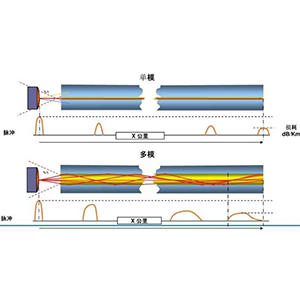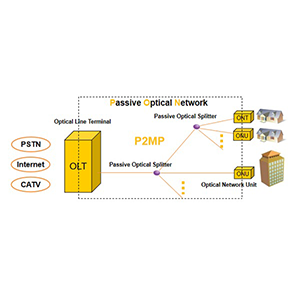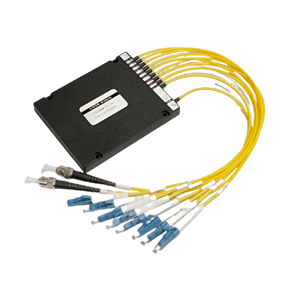The depth of optical cable burial is critical to the safety and reliability of optical cables. This article will explore the optimal depth of optical cable burial. We first outline the common regulations and standards for optical cable burial and analyze the main factors that should be considered. Next, we explore the depth of optical cable burial in different environments, including urban areas and suburban rural areas.
Then, we discuss how to determine the depth of optical cable burial in special circumstances, such as crossing rivers, railways, and inside buildings. Finally, we introduce typical optical cable burial cases in different countries and regions, and compare and analyze the differences in burial depths and reasons in various regions.
Basic requirements for optical cable burial depth
The basic requirement for the burial depth of optical cables is usually 0.6 meters to 1 meter to ensure that they are protected from physical damage and interference in soil and environmental changes. The specific depth depends on the terrain, climatic conditions and surrounding facilities. When burying, avoid paralleling with other underground pipelines to reduce the risk of interference. In addition, proper marking and protection measures are also important to facilitate future maintenance and repair to ensure the safety and reliability of optical cables.
1. Regulations and standards for optical cable burial:
The basic requirements for the burial depth of optical cables are usually stipulated by relevant regulations and standards, mainly including:
International Electrotechnical Commission (IEC) standards:
- IEC 60794-1-1 puts forward general requirements for optical cable burial.
National Electric Power Engineering Council (NESC) standards:
- NESC stipulates the minimum burial depth of optical cables in different occasions.
Domestic construction industry standards:
- GB 50366-2005 “Construction and Acceptance Specifications for Communication Pipeline Engineering”, etc.
These standards and specifications provide statutory minimum requirements and guidelines for optical cable burial.
2. Main factors affecting the depth of optical cable burial:
When determining the depth of optical cable burial, the following key factors need to be considered comprehensively:
(1) Safety protection:
- Sufficient burial depth can prevent the optical cable from external damage, such as being crushed by vehicles.
- Deeper burial can also better protect the optical cable from natural disasters.
(2) Post-maintenance:
- Burying the optical cable at an appropriate depth is conducive to subsequent optical cable maintenance and inspection work.
- Excessive burial will increase the difficulty and cost of maintenance.
(3) Engineering operations:
- During construction operations, it is necessary to consider the transportation needs of engineering vehicles and equipment.
- Avoid affecting surface buildings or other underground pipelines.
(4) Pipeline division:
- Different types of pipelines have corresponding position stratification requirements in the vertical direction.
- Optical cables should usually be buried at a specified depth within the pipeline division.
In short, when burying optical cables, it is necessary to balance various factors to ensure that the buried depth of optical cables complies with relevant regulations and actual needs.
Buried depth of optical cables in different environments
The buried depth of optical cables in different environments is different. In urban areas, the buried depth is usually required to be 0.6 meters to avoid interference with other pipelines. In rural or non-dense areas, it can be appropriately shallowed to 0.4 meters. For coastal or humid areas, due to different geological conditions, it is recommended to deepen the depth to more than 1 meter to prevent water level changes from affecting the safety of optical cables. In addition, when crossing roads, it is usually necessary to increase the burial depth to ensure the durability and reliability of the optical cable.
1. Burial depth of optical cables in urban areas:
In urban areas, the burial depth of optical cables needs to be determined according to specific environmental conditions:
Under the road surface:
- Generally, the burial depth is required to be no less than 0.8 meters to withstand vehicle loads.
- Important roads can be increased to more than 1 meter to enhance protection capabilities.
Under the sidewalk:
- Generally, it can be relatively shallow, usually about 0.5 meters.
- But the impact of pedestrian activities and occasional crossing of motor vehicles still needs to be considered.
In green belts:
- A shallower burial depth can be used, such as about 0.3-0.5 meters.
- Be careful not to affect the growth of tree roots.
In pipeline trenches:
- According to the pipeline layering requirements, optical cables are generally laid at a deeper position.
- For example, they should be laid separately from dangerous pipelines such as electricity and gas.
In general, the burial depth of optical cables in urban areas should balance the needs of protection and maintenance, and be coordinated with other pipeline layout rules.
2. Burial depth in suburban and rural areas:
In suburban and rural areas, the requirements for the burial depth of optical cables are usually more flexible:
In fields:
- A relatively shallow burial depth, such as 0.3-0.5 meters, can be used.
- However, the impact of agricultural production activities, such as deep plowing, on optical cables needs to be considered.
In hilly and mountainous areas:
- The burial depth should be determined based on the actual topography.
- It may need to be more than 1 meter to enhance the ability to resist disasters.
In the bushes in the forest area:
- It is necessary to avoid the roots of trees and increase the burial depth appropriately.
- At the same time, the possible threats caused by activities such as deforestation should also be considered.
In addition, in some remote areas, optical cables are usually laid in an overhead manner, and no special consideration is required for the burial depth. In short, the burial depth of optical cables in different environments needs to be evaluated and determined in a targeted manner.
Burial depth of optical cables in special situations
In special situations, the burial depth of optical cables needs to be adjusted according to the specific environment. For example, in mountainous or rocky terrain, the burial depth should be increased to more than 1 meter to prevent physical damage. When passing through busy roads or railways, it is recommended to use a deeper burial method, usually 1.2 meters or deeper, to resist external pressure. In frozen areas, the impact of the permafrost layer must also be considered, and the burial depth should be appropriately deepened to ensure the long-term safety and stability of the optical cable.
1. Cable burial at crossings such as rivers and railways:
In some special crossing locations, the cable burial depth should be paid special attention to:
(1) Crossing over rivers or waterways:
- The cable should be buried deeper under the riverbed, usually below 1.5 meters.
- Directional drilling and other methods can be used to cross the channel, and the burial depth can be appropriately increased.
- Use sturdy protective pipes or metal protective pipes to enhance protection capabilities.
(2) Crossing over railway lines:
- The cable should be buried at least 1.2 meters below the railway line.
- Pipe-through or pipe-jacking methods can be used to cross the railway to avoid damaging the line structure.
- The pipe should be strong enough and protective devices such as guardrails should be installed at the pipe mouth.
Taking measures such as increasing the burial depth and using protective pipes can enhance the safety and anti-interference ability of optical cables in special locations.
2. Laying optical cables inside buildings:
In some buildings, the laying method and burial depth of optical cables also need special consideration:
(1) In basements or parking lots:
- Due to limited space, optical cables can be laid shallowly or against the wall.
- If necessary, metal protective pipes or trough boxes can be used for protection.
- Be careful not to affect the functional use of the building.
(2) Wiring inside suspended ceilings:
- The optical cable can be hidden inside the suspended ceiling for laying.
- This is not only beautiful, but also avoids the impact of ground construction.
- The load-bearing capacity and fire resistance of the ceiling structure must be ensured.
For the laying of optical cables in special environments, in addition to considering the burial depth, appropriate protective measures must be taken to ensure the safety and reliability of the optical cables.
Actual case analysis of the burial depth of optical cables
Actual case analysis of the burial depth of optical cables shows that in urban environments, optical cables are usually buried at a depth of 0.6 meters to avoid conflicts with other underground facilities. In some mountainous projects, the burial depth is increased to 1 meter to cope with the risks brought by geological instability. In addition, when crossing the railway, the depth reaches 1.2 meters to ensure that the optical cable is not affected by external pressure.
There are some differences in the depth of optical cable burial in different countries and regions, which are mainly reflected in the following cases:
1. American case:
- According to NESC standards, the minimum depth of optical cable buried under roads is generally 0.9 meters.
- The minimum burial depth under railway lines is 1.2 meters.
- For remote areas and rural areas, the burial depth requirements are relatively shallow.
2. European case:
- European countries usually refer to IEC standards and have clear regulations on the burial depth of optical cables.
- For example, Germany requires the minimum burial depth of optical cables in urban areas to be 0.8 meters and 0.6 meters in suburban areas.
- Some countries have also formulated more detailed standards based on actual conditions.
3. China Case:
- China’s GB 50366-2005 standard stipulates that the minimum depth of burying optical cables under municipal roads is 0.8 meters.
- For rural areas and forest areas, a shallower burial depth of about 0.5 meters is allowed.
- At some special crossing points, such as rivers and railways, a deeper burial depth is required.
From the above cases, it can be seen that there are certain differences in the requirements for optical cable burial depth in different regions, which are mainly affected by the following factors:
1. Local regulations and standards:
- Different countries/regions have formulated corresponding optical cable burial standards based on their own conditions.
2. Local environmental characteristics:
- Such as urbanization, topography, density of underground pipelines and other factors.
3. Engineering construction habits:
- Some regions have accumulated relatively mature experience and practices in optical cable construction.
In short, the depth of optical cable burial needs to balance factors such as safety protection and post-maintenance, and also meet local regulations and standards and actual environmental characteristics.
Summary
Reasonably determining the depth of optical cable burial is the key to ensuring network security and stability. Our company is a well-known domestic supplier of optical communication products, and has long focused on the research and development and application of optical fiber network solutions. We have rich experience in optical cable engineering practice and can provide you with professional design and construction guidance.
Our products and services meet major domestic and international standards and achieve excellence in performance, reliability and safety. At the same time, our team of engineers will provide you with customized solutions to ensure that the deployed optical cable network can meet your actual needs to the greatest extent. Contact us now to learn more.
Fiber optic cable burial depth FAQ
Optical cables are typically buried at a depth of 24 to 36 inches.
Yes, local regulations and soil conditions can affect the required burial depth.
Shallow burial can lead to damage from surface activity, such as digging or erosion.
Yes, check with local utility and building codes for specific requirements in your area.
For shallow installations, a protective conduit can help shield the cable from damage.
Yes, but additional precautions may be needed to protect the cable from potential damage.
Consult local regulations, utility companies, or a professional installer for guidance.
While there isn’t a strict maximum, excessive depth can complicate future maintenance and repairs.
Mark the area, cease digging, and contact utility companies for guidance on safe procedures.
Yes, direct-burial-rated optical cables are designed to withstand moisture and environmental factors without additional protection.




